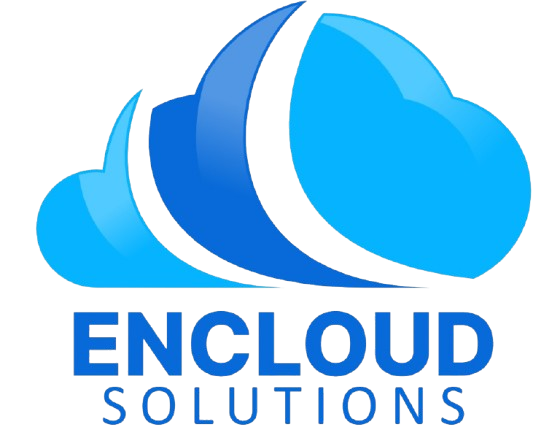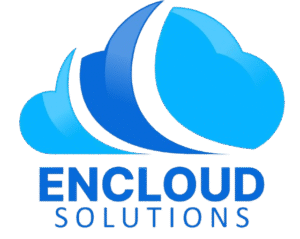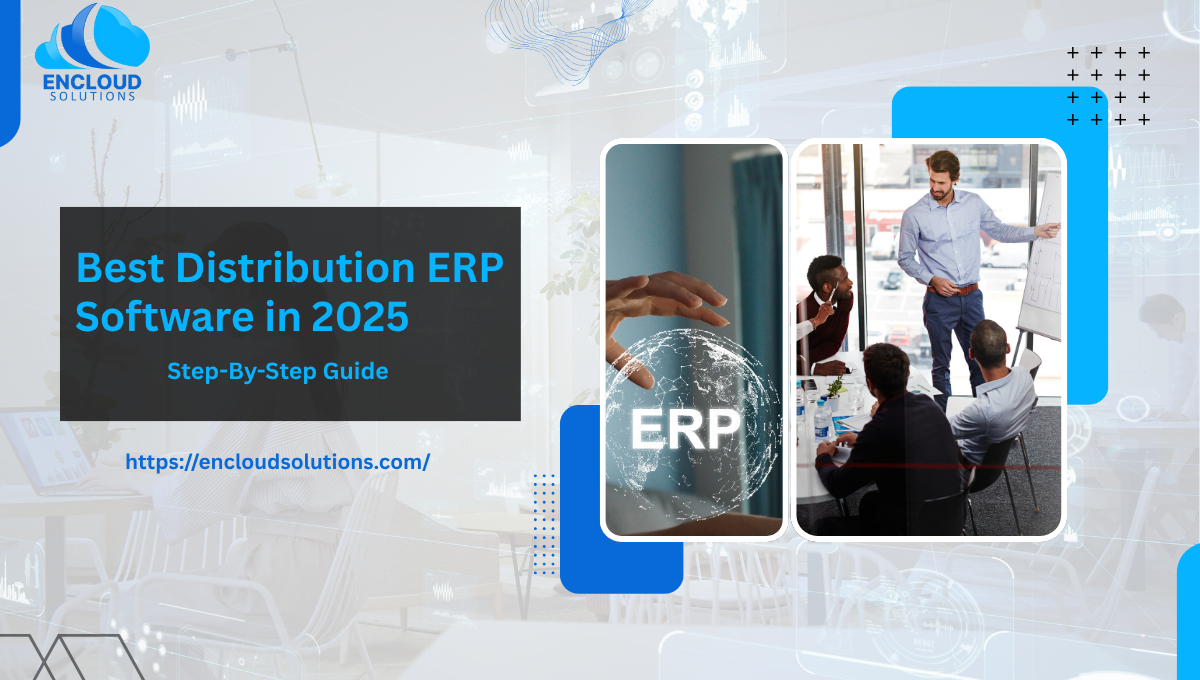
Do you know what the best distribution ERP software is for your business?
If you manage a wholesale or distribution company, you know how complex operations can become with hundreds of SKUs, multiple warehouses, and dynamic customer demand. The Best Distribution ERP Software acts as a central hub, unifying inventory, sales, purchasing, and accounting.
In practice, a good distribution ERP replaces error-prone spreadsheets and disjointed tools with automated workflows and real-time analytics. This means every order, shipment, and financial transaction feeds into one system, giving you visibility and control. Studies show companies typically see 25–30% cuts in inventory carrying costs and 93% successful ERP rollouts after implementation. In short, the best distribution ERPs transform a fragmented operation into a cohesive unit, improving accuracy and profitability.
Why Distribution ERP is Essential
Distributors face unique challenges: managing multi-warehouse stock, complex pricing, and fast order fulfillment. Without ERP, businesses juggle separate spreadsheets for inventory, orders, and finance, which leads to delays and errors. A specialized distribution ERP integrates all these functions. Key benefits include:
1) Centralized Data
All departments (sales, warehouse, and finance) share the same database. This real-time visibility prevents disconnected silos.
2) Real-Time Inventory Control
The system tracks stock across warehouses instantly. In fact, distributors often see inventory accuracy jump from ~70% to over 95% with ERP.
3) Order-to-Cash Automation
When you enter a sales order, the ERP reserves items, creates pick lists, and generates invoices automatically. This cuts lead times and fulfillment errors.
4) Cost Reduction
Automating routine tasks slashes labor and error costs. One analysis notes ERP “diminishes manual input and the errors that follow, enabling leaner operations and lower holding costs”.
5) Data-Driven Decisions
A unified ERP dashboard gives you insights into sales trends, supplier performance, and inventory turns. Executives can spot fast-moving products and plan smarter purchasing strategies.
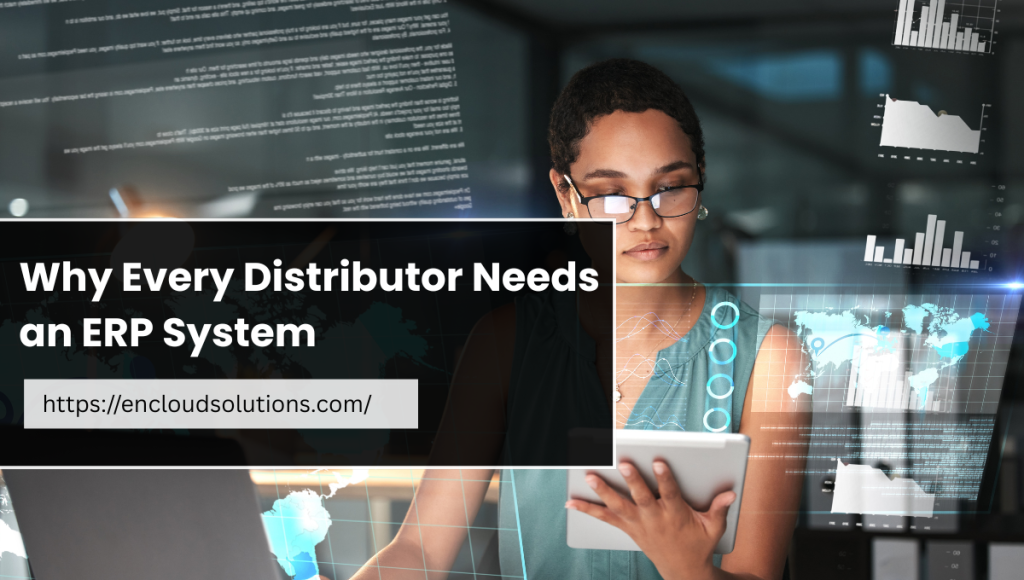
Key Features of Distribution ERP Software
Not all ERPs are built for distribution. The best distribution ERP software includes modules tailored to high-volume warehousing and shipping. Look for features like:
1) Multi-Warehouse Inventory Management
Real-time stock tracking across all locations, with bin/lot/serial support and barcode/RFID scanning. This lets you allocate stock to orders instantly and maintain accuracy at scale.
2) Order Processing & Fulfillment
Automated workflows so that when an order is placed, inventory is reserved, pick-lists are generated, and shipments are scheduled. The system should handle returns and backorders seamlessly.
3) Demand Forecasting (DRP)
Built-in forecasting uses historical sales data to suggest purchase orders and reorder points. This prevents both stockouts and overstock by keeping inventory at optimal levels.
4) Purchasing & Supplier Management
Streamlined purchasing with supplier catalogs, lead-time tracking, and automated PO creation. The ERP ties products to vendors, flags expected delivery dates, and automates supplier invoicing.
5) Shipping & Logistics Integration
Interfaces with courier services to calculate routes, print labels, and manage packing. For example, modern ERP systems (like Odoo) can even optimize delivery routes, updating inventory and revenue as orders ship.
6) Reporting & Analytics
Real-time dashboards for metrics such as inventory turnover, sales by product, and margin analysis. Customizable reports help you spot trends and make strategic decisions.
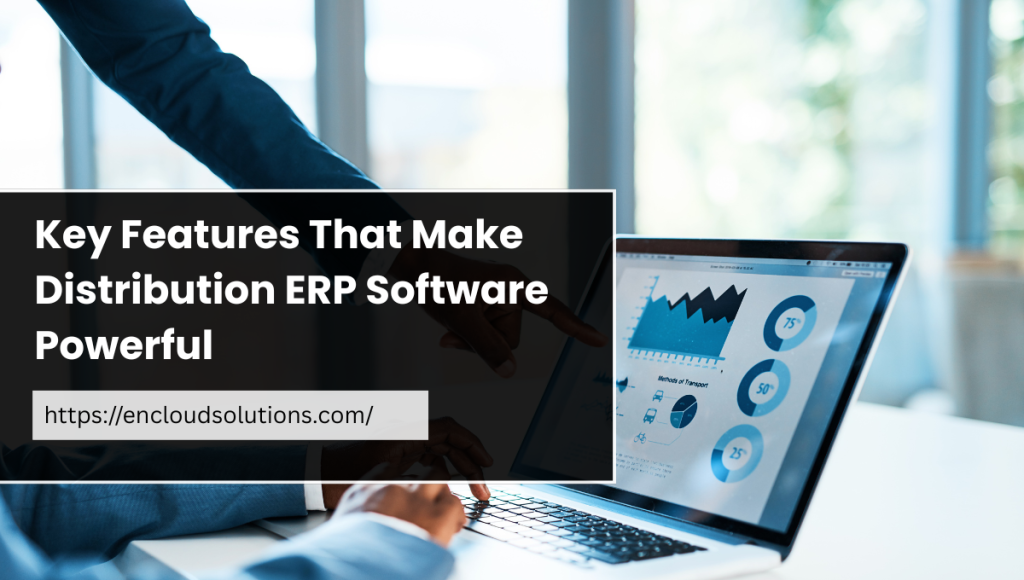
Benefits of ERP for Wholesale Distribution
Implementing the Best Distribution ERP Software yields measurable gains. Key advantages for distributors include:
1) Reduced Costs
By automating tasks like inventory tracking, invoicing, and reporting, you cut labor and error costs dramatically. Less manual work means leaner operations and lower inventory holding costs.
2) Higher Inventory Accuracy
With ERP, companies often see on-hand accuracy soar to 95% or more. The system prevents stockouts or overstocks by automating replenishment and giving real-time stock visibility.
3) Faster Order Fulfillment
End-to-end automation, from order entry to invoicing, eliminates bottlenecks. Distributors can process and ship orders much faster, boosting customer satisfaction.
4) Better Decision-Making
A distribution ERP turns data into insights. Managers get dashboards showing sales trends, slow-selling items, and supplier performance. As MicroChannel explains, these unified metrics enable “important decisions” for purchasing and strategy.
6) Scalability & Compliance
ERP systems grow with your business. You can add new warehouses, users, or products without a system overhaul. Modern cloud ERPs also handle tax calculations and regulatory reporting automatically, helping you stay audit-ready.
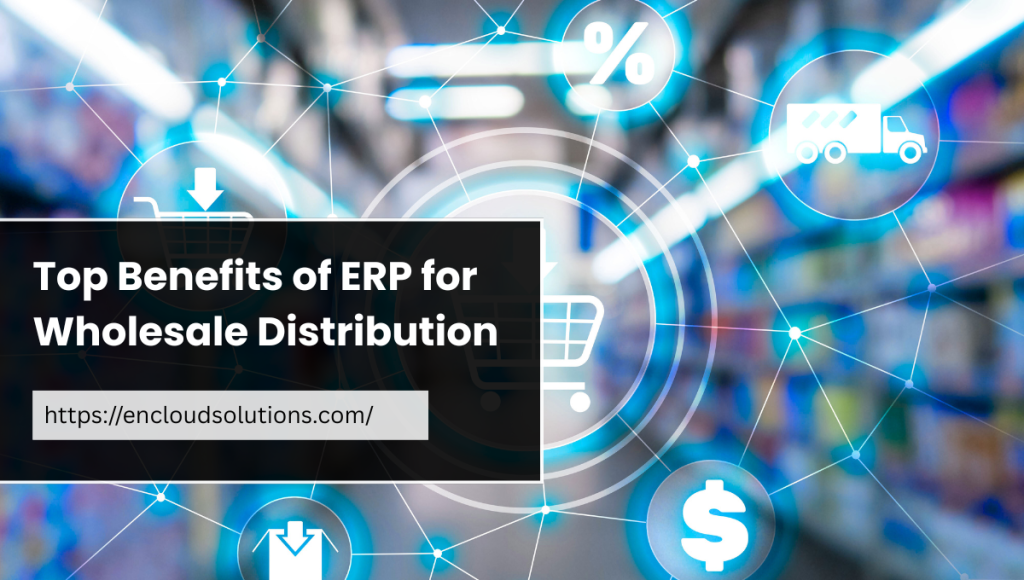
How to Choose the Right Distribution ERP
There’s no one-size-fits-all. The best distribution ERP software for your company depends on several factors:
1) Deployment Model
Decide between cloud (SaaS) and on-premise. Most distributors now favor cloud ERP to avoid large upfront costs; nearly two-thirds of companies choose cloud to benefit from subscription pricing and automatic updates. Cloud ERP can be accessed anywhere, which is great for multi-location teams. On-premise gives you full data control, but requires in-house IT to manage servers and upgrades. Some businesses opt for a hybrid approach, keeping legacy systems for specific tasks while moving core operations to the cloud.
2) Company Size
Match the ERP to your scale. Small distributors can start with a simpler, modular system and grow into it. For example, a startup might choose an affordable cloud ERP that bundles accounting and inventory. Larger distributors (hundreds of employees or multi-country) need enterprise-grade features like multi-currency finances, complex consolidation, and advanced supply chain rules. (Systems like SAP or Oracle S/4HANA are common at this scale, thanks to decades of global distribution experience.).
3) Industry Specifics
Look for distribution-focused features. Does the ERP offer lot/serial tracking or built-in pricing catalogs for wholesale tiers? Verify that it supports your business model, whether you do B2B e‑commerce, drop‑shipping, or 3PL services. For instance, ensure the ERP integrates with your e-commerce platform or EDI systems. As Encloud notes, Odoo highlights multi-warehouse management and delivery optimization on its distribution pages.
4) Total Cost & Customization
Evaluate pricing and flexibility. Open-source ERPs (like Odoo or ERPNext) have no license fees; you only pay for implementation, making them cost-effective for many SMBs. Proprietary systems (SAP, Oracle, Microsoft) often require substantial license and maintenance fees. Consider the total cost of ownership (licenses, cloud hosting, training). Also, be cautious with heavy customizations: they solve problems today but can complicate future upgrades. Prefer software that fits your needs out-of-the-box when possible.
5) Vendor Reputation & Support
Choose a reliable provider. A well-known ERP vendor ensures regular updates, robust security, and a wide partner network. For example, large vendors like Oracle and Microsoft have global support teams. Encloud Solutions, as an Odoo partner, often highlights how Odoo’s modular design suits distribution clients. Check for local implementation partners and references. Strong support and training are crucial, since switching ERPs later can be costly. A formal governance plan (executive sponsors, steering committees) also improves success.

Distribution ERP for Small and Medium Businesses (SMBs)
Small distributors and wholesalers benefit greatly from ERP. Cloud-based, modular ERP systems are now affordable even for SMBs. Modern ERP isn’t just for large enterprises. In fact, about 65% of small businesses now use ERP to manage growth. For a small distributor, the Best Distribution ERP Software often means a scalable, budget-friendly platform. Open-source options like Odoo or ERPNext are popular choices; they let you start with core modules (e.g., finance, inventory, sales) and add features over time. Odoo’s cloud edition, for example, efficiently manages multi-warehouse inventory and optimizes delivery routes, all without hefty license fees.
Even niche providers have SMB-friendly solutions. Katana MRP is designed for small manufacturers/distributors, with a visual dashboard and real-time inventory control. Its smooth integrations with Shopify, WooCommerce, QuickBooks, and Xero help small teams link their store and accounting easily.
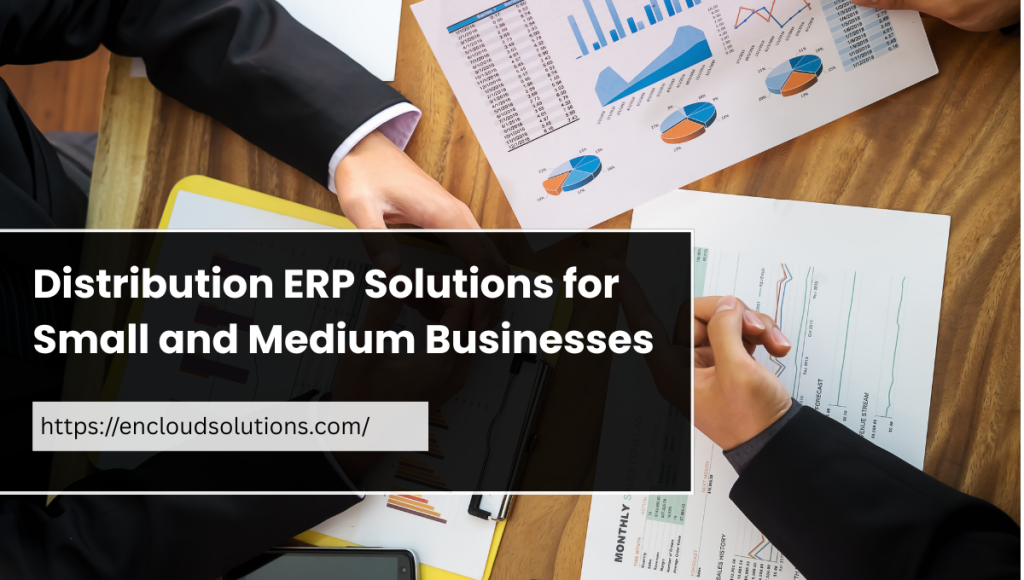
Top Distribution ERP Software in 2025
Below is a snapshot of leading distribution ERP systems and their focus:
| Software | Best For | Deployment | Pricing Range |
| Microsoft Dynamics 365 Business Central | Wholesale distributors | Cloud, On-Prem | $1,000, $3,000/month |
| Deacom | Food & beverage distribution | Cloud, On-Prem | $500, $5,000/month |
| Acumatica Cloud ERP | 3PLs and mid-market | Cloud, On-Prem | $2,800, $5,500/month |
| Oracle NetSuite | Growing businesses | Cloud | $3,000, $8,500/month |
| Epicor Prophet 21 | Building materials, Mfg | Cloud, On-Prem | (contact vendor) |
| Infor CloudSuite Distribution | Consumer goods distributors | Cloud, On-Prem | $3,000, $7,000/month |
| Datacor ERP | Chemicals & process distributors | Cloud, On-Prem | $1,500, $3,500/month |
Each of these products excels in particular niches or company sizes:
1) Microsoft Dynamics 365 Business Central
Often cited as best for wholesale, Dynamics BC provides advanced pricing tools and a familiar Microsoft interface. It integrates ERP with CRM and Office 365, and offers warehouse management and multi-location inventory modules for distributors.
2) Oracle NetSuite
A popular cloud ERP, NetSuite unifies accounting, CRM, inventory, and e-commerce. It’s highly scalable, serving businesses from small distributors to global firms. According to Cybernews, NetSuite’s strengths include real-time analytics and automation of tasks like invoicing.
3) SAP Business One / S/4HANA
For larger enterprises, SAP offers powerful, industry-specific ERP suites. SAP ERP is known for advanced analytics, global scalability, and robust supply chain modules. (For mid-market, SAP Business One is a more affordable variant.)
4) Odoo ERP
An open-source platform with 40+ modular apps, Odoo is highly customizable and cost-effective for distributors. It covers sales, inventory, manufacturing, and more. Being open-source, it has no license fee for the Community edition. Cybernews notes Odoo’s flexibility and modular design make it ideal for startups and growing companies. Encloud Solutions highlights that Odoo’s Warehouse module handles complex routes and quality checks, exactly the kind of features distributors need.
5) Acumatica Cloud ERP
Acumatica offers a full cloud ERP with strong multi-entity and multi-currency support. It caters well to 3PLs and distributors with its open architecture and mobile accessibility.
6) Epicor Prophet 21
A specialized solution for manufacturers and distributors, Prophet 21 includes advanced supply chain management and AI-driven analytics. It’s highly customizable for different industries (make-to-order, configure-to-order, etc.) and helps businesses track raw materials through production.
7) Infor CloudSuite Distribution
Built for consumer goods and wholesale, Infor’s CloudSuite provides comprehensive features like demand planning, EDI, and lot traceability.
8) Priority ERP
An AI-driven system that uses embedded analytics. It’s noted for strong inventory management and AI insights, earning it “best for AI-driven insights” in the CFO’s list.
9) MRPeasy
Best for very small manufacturers/distributors. This cloud MRP starts at $49/user/month and offers production scheduling, inventory control, and order management. It includes a built-in customer portal and serial/batch tracking.
10) ERPNext
An open-source ERP similar to Odoo. It offers deep customization and covers distribution needs (inventory, order fulfillment, multi-store management). CFO notes ERPNext is ideal for companies wanting an ERP without licensing fees.
11) Katana
A lean inventory and production management tool, Katana excels at real-time inventory tracking for makers and distributors. It natively syncs with Shopify and accounting tools, making it a smart pick for SMBs selling online.
12) Extensive 3PL Warehouse Manager
Designed for 3PL providers and omnichannel fulfillment, Extensiv integrates order management across channels and simplifies warehouse ops. CFO highlights its strength in connecting multiple sales channels for efficient order processing.
13) Focus SoftNet
A flexible, industry-specific ERP. It provides real-time analytics and customizable dashboards, with strong inventory and multi-location features. CFO chose it for its configurable, complete tools for unique distribution needs.
14) Deskera
Positioned as a “complete business automation” ERP. It offers modules for accounting, inventory, CRM, and e-commerce, targeting small to mid-sized businesses. (Notably, Deskera has a free plan and starts at around $199/user/month.)
Each of these solutions has pros and cons, and the “best” choice depends on your exact needs. For example, a food distributor might prefer Deacom (not listed above) with lot traceability, while a pharmaceutical distributor might choose Datacor ERP for compliance. Always pilot key processes (like inventory movements or order entry) before committing.
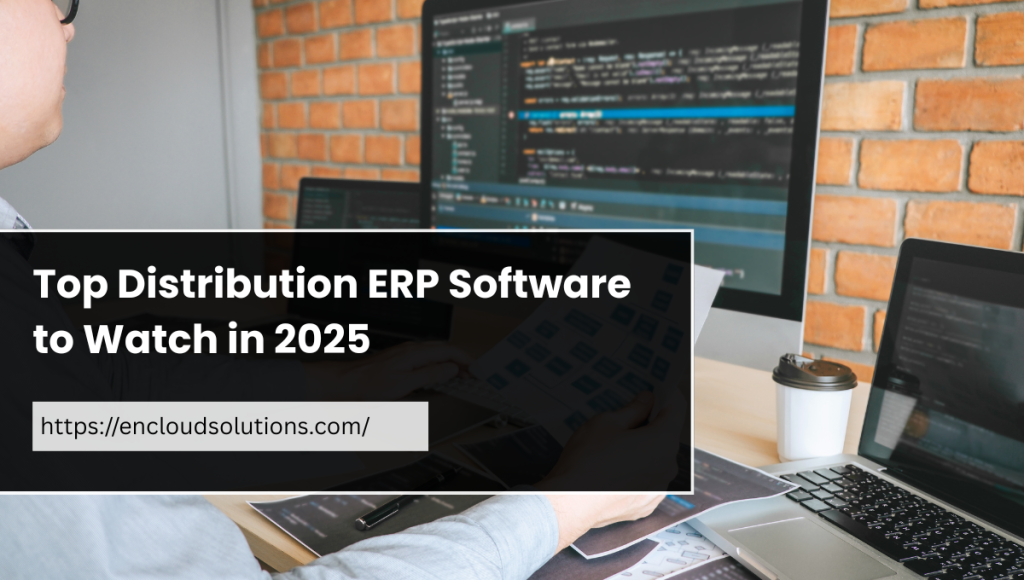
FAQs
What is distribution ERP software?
A distribution ERP is an enterprise system tailored to wholesale and distribution companies. It integrates core functions, including inventory, order management, purchasing, and accounting, into a single platform. Unlike basic accounting software, a distribution ERP includes warehouse management, demand forecasting (sometimes called Distribution Resource Planning), and supply chain modules that handle bulk orders and shipments. In essence, it’s the software backbone that automates order entry, stock replenishment, and fulfillment for a distributor.
Which ERP is best for small distributors or SMBs?
Small distributors often need a balance of capability and simplicity. Odoo ERP and ERPNext are strong contenders; both are open-source, highly modular, and budget-friendly. They allow you to start with just a few apps (like Inventory and Sales) and add more (Manufacturing, e-commerce) over time. Katana is another good choice for very small setups with simple production needs. For a very lightweight approach, MRPeasy offers basic MRP features at a low price. On the other hand, cloud ERPs like NetSuite or Microsoft BC can also fit SMBs if the budget allows, since they scale easily. The key is choosing a system that won’t overwhelm a small team but can grow as you add warehouses or products.
How much does distribution ERP software cost?
Pricing varies widely. Open-source ERPs (Odoo, ERPNext) have no per-user license fees; you pay only for hosting and implementation. Proprietary systems (SAP, Oracle, Microsoft) charge significant licensing fees, often hundreds of dollars per user per month. For example, MRPeasy starts at about $49/user/month, while ERPNext has plans from $5/user/month (for cloud). Larger ERP suites can run several hundred dollars per user per month. Also consider the total cost of ownership: implementation services, training, and any custom development. Many distributors control costs by selecting a modular approach, starting with core features, and adding modules as needed. Always ask vendors for a detailed quote and watch out for hidden fees.
